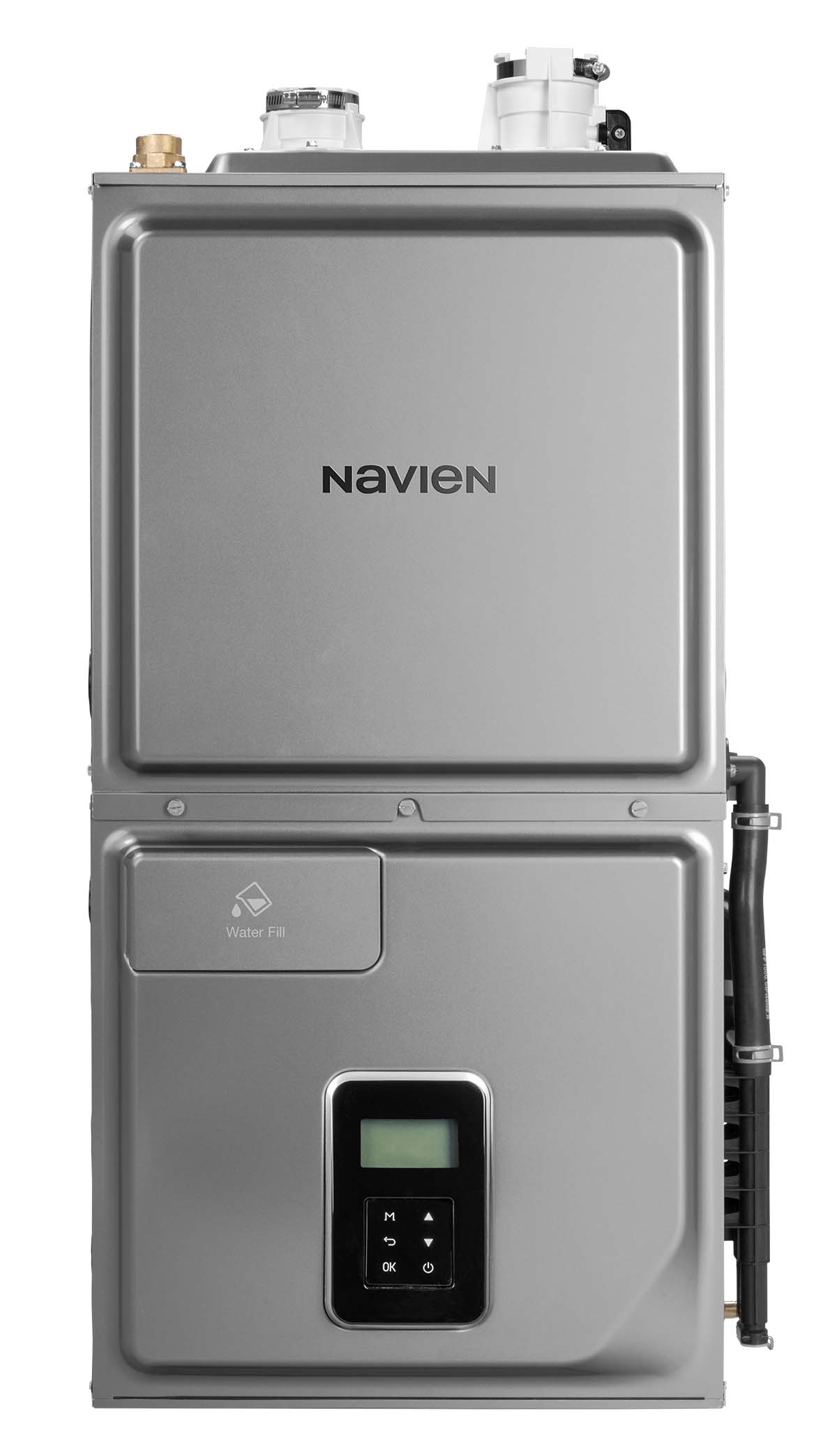Since the concept of forced air heating was developed in the early 1900’s the fundamental approach for heating the air has remained relatively unchanged: A fuel is ignited and burned, generating heat in a heat exchanger that is located directly in the conditioned airstream. A blower moves air from the conditioned space over the heat exchanger, transferring the heat energy into the airstream to heat the home. Through time, we have seen this approach create two issues affecting consumer home comfort:
-
Dry Air
With a conventional furnace, the air being heated comes into direct contact with the combustion heat exchanger, exposing it to extreme temperatures of up to 1000 degrees Fahrenheit, and immediately lowering the relative humidity level of the supply air. -
Sound
As noted above, conventional furnaces locate their heat exchanger, where gas is burned, directly in the conditioned airstream. This configuration allows sounds created by the combustion process to be transferred into the home.
Hydronic Furnace Impact on Dry Air and Sound
Using water to transfer heat energy into the home can minimize or even eliminate these issues of dry air and operational sounds.

Navien NPF Hydro-Furnace. (Courtesy of Navien)
When water is used to heat the air, the heat exchanger used to heat the water is located out of the airstream. Contractors have been combining hydronics and forced air applications for years, utilizing various components to assemble a complete system. The heat source for the water can be a separate compact wall-mounted water heater or boiler, along with an air handler to move the air over a hot water coil. With a hydronic furnace, this combination is done within only one unit. If the hydronic furnace has the combustion heat exchanger located in a sealed compartment outside of the airstream, most of the noise created by the combustion process is prevented from being carried into a home.
The hydronic water-to-air heat exchanger used to transfer the heat into the airstream typically operates between 120- and 150-degrees Fahrenheit, much lower temperatures than seen in a conventional gas forced air furnace. These lower temperatures have minimal impact on the humidity level of the conditioned air. This provides a much more comfortable environment for the consumer, reducing and sometimes eliminating the need for auxiliary humidifiers and the associated consumables normally needed when heating with a conventional forced air gas furnace.
Independent Air Temperature and Airflow Adjustment
Using water to heat the air provides a greater level of fine tuning and adjustability not available with conventional forced air furnaces. Forced air furnaces can adjust the firing rate and airflow to control the amount of heat delivered to the conditioned space. Adjusting one always affects the other, resulting in applications where there may be a compromise to comfort. Using water provides another element of adjustment: water temperature and flow. ;Introducing water temperature and flow as another level of adjustment allows discharge air temperature and airflow to be maintained independently of one another, giving the installer greater control to meet each application’s precise comfort requests.
Previous hydronic forced air systems provided greater benefits, but required multiple pieces of equipment, and in some cases multiple contractors involved. Today we see manufacturers like Navien, with their NPF700 hydro-furnace, introducing this technology in a single unit using a typical forced air footprint, making hydronic forced air heating more readily available for the mainstream HVAC market.
By Ken Ely
Since 2006, Navien, Inc. has become one of the fastest growing companies in the home comfort sector in North America and has established itself as the leader in condensing technology, providing condensing tankless water heaters, combi-boilers, and wall-hung boilers. In 2018, Navien moved beyond the condensing market with the introduction of the NPN series non-condensing tankless water heater, and now is breaking into the HVAC market with the NPF Hydro-furnace. To learn more about Navien, Inc., and its world-class product lineup, visit www.navieninc.com.







